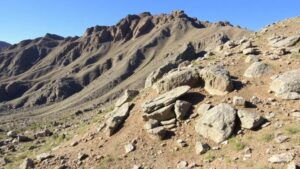Spotting Exposed Bedrock in River Channels for Gold Sniping
Understanding Exposed Bedrock in River Channels for Gold Sniping
Gold sniping is an exciting method frequently employed by recreational prospectors to retrieve gold particles from river channels. One of the essential aspects of this technique is the identification of exposed bedrock, where gold is often concentrated. This article explores the characteristics of exposed bedrock, its significance in gold sniping, and methods for effectively spotting it.
What is Exposed Bedrock?
Exposed bedrock refers to the solid rock that is visible at the earths surface. In the context of river channels, this bedrock is typically the foundation on which sediment and soil form. Gold particles can accumulate in cracks, crevices, and along the edges of this bedrock due to the natural flow of water, making it a prime target for snipers.
Why is Exposed Bedrock Significant in Gold Sniping?
Understanding the geological features and characteristics of exposed bedrock is crucial for successful gold sniping. The significance lies in several key factors:
- Gold Concentration: Gold is denser than other materials and tends to settle at the base of river channels. When the bedrock is exposed, it often creates natural traps for gold particles.
- Hydraulic Sorting: Fast-flowing water can erode softer sediments, leaving behind denser materials, including gold. In particular, exposed bedrock creates a dynamic environment conducive to this natural sorting process.
- Accessibility: Sniping directly on exposed bedrock allows prospectors to access areas where other methods, such as panning or sluicing, may be less effective.
Identifying Exposed Bedrock in River Channels
Successful gold sniping begins with the ability to identify exposed bedrock in river channels. Several indicators can help prospectors locate these areas:
1. Riverbank Characteristics
Exposed bedrock is often found in regions where the riverbanks exhibit steep slopes or cliffs. Look for:
- Rock Formations: Granite, schist, and quartzite are common bedrock types found in gold-bearing areas. Their distinctive hardness makes them observable along riverbanks.
- Wrinkled Edges: Curved or jagged edges along the river may indicate the presence of exposed bedrock.
2. Shallow Water Regions
Shallow areas with minimal sediment movement often allow bedrock to surface. Factors to check include:
- Low Flow Velocity: Look for stretches where the water moves slowly; these sections may have uncovered bedrock.
- Ripples and Eddies: Observe where the water forms ripples or eddies, which can indicate the presence of underlying rock.
3. Geological Mapping
Utilizing geological maps can enhance the search for exposed bedrock by providing information regarding local geology. Identify areas documented for gold presence and focus exploration accordingly.
Techniques for Gold Sniping on Exposed Bedrock
Once exposed bedrock has been identified, several techniques can be effectively employed to extract gold:
1. Hand Tools
Tools such as a metal detector, cooking spatula, or small shovel can be utilized to scrape along the bedrock surface gently. Use these tools without causing damage to the surrounding ecosystem.
2. Snipe Pans
Snipe pans are shallow, wide pans specifically designed for extracting fine gold from cracks in the bedrock. The lightweight design allows for easy maneuvering and quick processing of materials.
3. Vacuum Systems
For more technical prospectors, a small vacuum system can be used to suck up gold particles from crevices within the bedrock. This method allows for thorough cleaning of the area and maximizes potential gold recovery.
Conclusion and Actionable Takeaways
Spotting exposed bedrock in river channels is a foundational skill for any successful gold sniping endeavor. By understanding the geological indicators, utilizing the right techniques, and employing appropriate tools, prospectors can effectively locate and retrieve gold particles. Remember that the landscape is continually changing, so regularly revisiting sites and adapting techniques is crucial for optimizing success in this rewarding pursuit.
In summary, always conduct thorough research on local geology and regulations while ensuring the environment is preserved for future generations of gold snipers.



